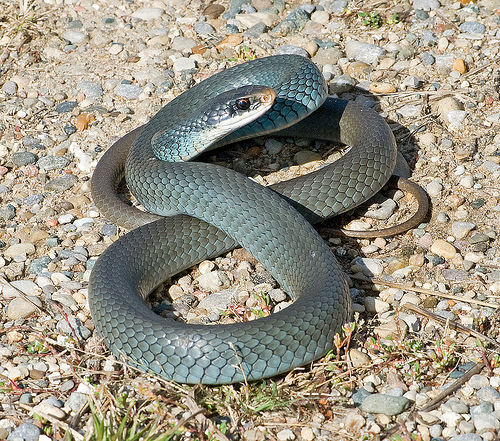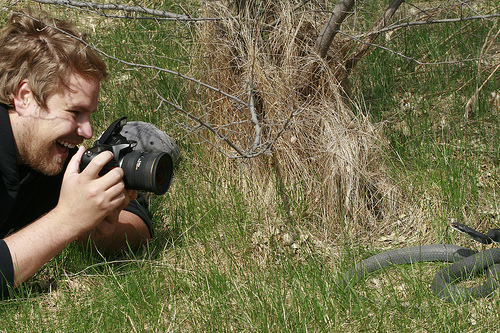

Our assay should be effective for other environmental samples and can be used for investigating other factors negatively affecting blue racers, for example helping to quantify blue racer habitat suitability and site occupancy. More fecal samples collected at strategic locations during snake peak activity would enable a more thorough assessment of the possibility of turkey predation. We detected no racer DNA in any wild turkey fecal sample. Our assay is specific, can detect the target species at very low levels of concentration (0.002 copies/μL) and can accurately quantify the copy number ≥0.26 copies/μL. As wild turkey predation has been suggested to negatively affect racers, we tested the assay on eight wild turkey fecal samples. We tested the assay in silico and in vitro using DNA of blue racers and co-occurring snake species, and estimated the LOD and LOQ using synthetic DNA. We designed and evaluated the performance of an eDNA ddPCR assay that can be used for multiple facets of conservation of this species. Coluber constrictor foxii, commonly known as the blue racer, is a subspecies of Coluber constrictor, a species of nonvenomous, colubrid snakes commonly referred to as the eastern racers.

The species is threatened by multiple factors including habitat degradation and loss, road mortality, persecution, and potentially predation. The animals speed and beauty make an encounter with this snake an exhilarating experience for anyone with a sincere interest in natural history. The blue racer snake, Coluber constrictor foxii, is one of. The only population of the endangered blue racer (Coluber constrictor foxii) in Canada occurs on Pelee Island, Ontario. Browse 70+ coluber constrictor stock photos and images available, or search for coluber constrictor foxii to find more great stock photos and pictures. Moreover, in some parts they are also killed in large numbers as a result of superstitious beliefs.


 0 kommentar(er)
0 kommentar(er)
